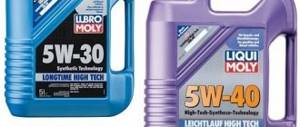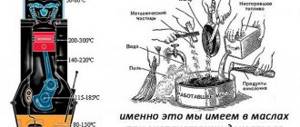Blackening of oil is a phenomenon that occurs quite often. Most car owners pay little attention to the condition of the car. But in vain. After all, a timely detected malfunction will help to avoid major repairs, for which you will have to pay a lot of money.
The most common sign that something is wrong with a car is a change in the color of the grease. When pouring, the color of the composition was transparent. A little time passed and the oil turned black. This phenomenon is always alarming. Moreover, sometimes darkening occurs very quickly.
How quickly does oil darken?
Many car enthusiasts are interested in how quickly the engine oil turns black. The color of the lubricant does not directly depend on the mileage of the car. The following factors are important:
- oil fluid quality;
- additives included in its composition;
- engine performance;
- its level of wear and contamination.
If the engine is new and in absolutely good working order, then the change in color of the lubricant depends on the elements included in its composition.
High-quality oil becomes darkened no earlier than after a couple of thousand kilometers. However, there are also many nuances here. Motor oil may contain various additives. If a lubricant with a low concentration of alkali is poured into the engine, flushing will take place slowly, therefore, the oil will not darken quickly.
In any case, the grease will turn black. This does not always mean that it needs to be replaced. If the car oil remains light, think about it. Perhaps it does not flush the engine, which is why the parts become very dirty. In such a situation, it is advisable to replace the lubricant with another one.
Remember not to drive with more oil than the car manufacturer recommends. This is due to the fact that when driving, the oil fluid consumes its own additives. Due to this, over time, it does not cope with its tasks (including washing).
Deposited in the oil channels, dirt and soot will begin to reduce their size and throughput. If the lubricant is not replaced in time, the motor will become coked. The layer of dirt will become so thick that the new liquid simply will not be able to wash it away. This will affect the engine power and reduce its performance.
How quickly should engine oil darken?
Acting as an engine cleaner, the oil changes its original light color to cloudy or even black. This is a natural process that requires timely replacement of engine oil approximately from 7 to 10 thousand km.
You can more accurately determine that it is time for a replacement using a dipstick, which will show the oil level in the engine and its color.
If a very strong blackening of the gasoline engine is observed after a couple of kilometers of driving, then you should not postpone a visit to the nearest car service center to diagnose and repair the car.
This rule does not apply to diesel engines due to the nature of the fuel used.
When changing the brand of oil to a more expensive analogue, a rapid change in color is often also observed. This is due to the increased cleaning effect of motor oil. Therefore, it is recommended to make the first replacement after 3-4 km in order to remove accumulated dirt.
The age of the engine should also be taken into account. If it is new (up to a year), the oil should not darken quickly. Accordingly, the older the motor, the faster the need for updating arises.
Causes
As you know, any lubricant for internal combustion engines may contain additives. Moreover, there can be many of them and each of them is introduced into the composition of the consumable material for a specific purpose. In particular, these can be chemical elements responsible, for example, for reducing friction of engine elements, temperature properties, viscosity, and so on.
Dipstick for checking lubricant level with residual black oil
And one of these additives is a substance responsible for the alkaline index. And not without reason, because alkali is a very important element in the composition of any lubricant. In particular, it eliminates chemicals that can enter the lubrication system during operation of the motor fluid. In addition, alkali prevents the appearance of sediments and deposits in the engine, while simultaneously removing all dirt and harmful deposits.
But if there is not enough alkali in the MM, then the engine will wear out much faster and, accordingly, will become clogged with all kinds of sediments and deposits. This means that the oil quickly turns black in the engine is not surprising. So, let’s consider in general the reasons why the MM can quickly darken in the engine:
- as we have already figured out, this is a lack of alkaline number in the composition of the lubricant;
- the entry of combustion and oxidation products into the lubrication system as a result of physical wear of the cylinder-piston group;
- directly poor quality of consumables (don’t be surprised if you bought MM from some suspicious seller on the side of the road);
- or it can be an expensive and high-quality consumable material that washes away deposits and sediments formed in the vehicle’s internal combustion engine during oil operation.
Black waste liquid
Reasons for rapid darkening of engine oil
During engine operation, the oil gradually changes its color and becomes darker, and sometimes black. This scares and worries many people. In fact, oil blackening is a natural process. Sometimes it happens faster, sometimes slower. But why does it happen at all? Due to the following reasons:
- there is little alkaline additive in the lubricant;
- the piston group is worn out, which causes a large amount of combustion products and fuel oxidation to enter the lubricant;
- The engine overheats, which leads to oil boiling. As a result, the additives are destroyed and the lubricant darkens;
- poor quality lubricant. This usually happens when it is bought at spontaneous markets or from suspicious sellers;
- on the contrary, high-quality lubricant is used, which quickly and thoroughly flushes the dirty engine.
There are several reasons why engine oil begins to darken quickly.
The fact is that while the engine is running, the oil is constantly moving, while it collects carbon deposits, oxides, and other debris and brings it into the crankcase. This cleansing ability of the oil is due to the presence of various additives in it. Depending on the brand of lubricant used, the number of additives in it will be different, and each of them will perform its role:
- reduction of friction;
- increase in viscosity;
- control of temperature properties and others.
One of the additives used in lubricants is alkaline. It allows you to remove chemicals that have entered the engine, reduces the likelihood of precipitation, and removes deposits and dirt that have formed. If there is little alkali in the oil used, the engine will wear out faster and a large amount of soot and various deposits will form faster.
Oil not only lubricates, but also cleans the engine.
Video: reasons for rapid darkening of engine oil
Causes of blackening of lubricants
Natural and malignant factors can be distinguished:
Natural aging
Natural reasons include those that result in a change in the chemical composition without loss of the lubricating, washing and cooling properties of the lubricant.
Each lubricant has an operating life established by the manufacturer, during which the oil’s functions are performed at the proper level under normal operating conditions.
Protection is provided by keeping wear products in suspension, the accumulation of which leads to blackening of the oil in gasoline and diesel engines, without affecting the protective and lubricating functions.
External reasons
These are malfunctions of vehicle systems or violations of operating rules, as a result of which the properties of the lubricant are lost.
Why oil darkens - video
- Severe engine contamination. Mainly in internal combustion engines with high mileage. When replacing the lubricant, up to 15% of waste remains in the system with wear products. Over time, deposits increase and early blackening of fresh oil occurs when they are mixed.
- Engine overheating. Frequent engine operation under extreme conditions. When driving at high speeds, the temperature of the lubricant increases, the formation of varnish and sludge deposits becomes more likely, and the aging process accelerates. The oil turns black faster. If the engine overheats (boils) once, the lubrication functions are lost and the oil turns black.
- Wear of the piston group. With high vehicle mileage, as a result of natural physical wear and tear, compression in the internal combustion engine decreases. The piston compression rings allow unburned products of the fuel-air mixture to pass into the engine crankcase. Especially relevant for diesel engines . Due to design features, even a slight decrease in compression entails a breakthrough of combustion products into the crankcase.
- Loss of engine tightness. When crankshaft or camshaft seals or valve cover seals wear out, moisture or dirt may enter the system. Darkening of the lubricant as a consequence.
- Counterfeits and low quality oil. Darkening due to normal engine operating temperatures affecting the lubricant.
- Change of oil manufacturer. Using a lubricant with more active additives that are responsible for the cleaning properties of the oil. As a result, the resulting sludge compactions soften. Dispersing properties retain contaminants in the lubricant, thereby changing its color.
- Using oil that does not meet specifications. Due to the design features of the engines, the manufacturer recommends using only the appropriate lubricant.
The use of an unsuitable lubricant leads to a decrease in function and a change in its chemical composition as a result of changes in engine operation.
Causes of oil blackening
New motor oil has a yellowish color and has certain properties laid down by the manufacturer. Towards the end of the operating period, the lubricant darkens and requires scheduled replacement. If the liquid turns black after 1000 kilometers or earlier, this is a sign of an existing problem. You may also notice a burning smell from the exhaust system.
Black oil on dipstick
To understand why the oil turns black in a diesel or gasoline engine, you need to understand the properties of the lubricant. A good lubricant may contain many additives designed to improve engine performance. Some reduce friction of engine parts and give the fluid the desired performance characteristics in a certain temperature range.
There is another unique additive needed to regulate the TBN of the oil. Alkali is necessary for normal operation of the motor, as it does not allow contaminants to accumulate on the surfaces of parts. It also neutralizes acids penetrating inside the unit and cleanses the system as a whole.
If the engine oil quickly turns black, the cause is likely due to a lack of alkaline additives. Such motor oil is not able to cope with deposited contaminants and this leads to adverse consequences. In this case, the motor wears out quickly and sooner or later will require major repairs. The reason is overheating and oil starvation.
In certain cases, the engine oil turns black, even if you have filled in lubricant from a trusted manufacturer. The issue is a late replacement of the lubricant or critical wear of the power unit.
Consequences
The question of whether blackened grease is a bad sign is both psychological and practical. Practice shows that people receive deep moral satisfaction from pure motor lubricant. Experienced motorists often believe that good quality motor oil should not turn dark at all, except perhaps closer to 10,000 kilometers.
Poor lubrication will ruin the engine
This opinion goes back to the past, when the quality of auto lubricants was completely different. A good motor lubricant then differed from a bad one, among other things, by the speed of its contamination. And such a factor as the blackness of the lubricant was considered one of the most important indicators of the need for its replacement. The cheapest oils turned black after 500 km, so car owners had a negative attitude towards them - few people would like to change the lubricant every week.
It should also be noted that in those years, motor oils could turn black not even thanks to additives, but precisely as a result of the poor quality of the lubricants themselves, so the problems of those times are quite understandable. At the same time, doubt arises as to whether such an attitude is fair for assessing the quality of modern products and the condition of engines?
The constant cleanliness of modern motor oils may not indicate their high quality or the cleanliness of the car engine.
Most often, you can draw the opposite conclusion: car oil is unable to cope with one of its most important duties. It simply cannot maintain the operating condition of the engine and protect it from harmful wear products. The reason lies in the fact that the darkening oil “absorbs” all these products. At the same time, it seems to “bind” them, preventing them from settling on the surfaces of the motor elements. In addition, in this case, acid “precipitates” do not come into contact with metal parts, which prevents increased wear and corrosion of these elements.
Consistently clean oil is evidence that this function is simply not working. Despite the fact that a clean drop of lubricant on the dipstick always looks nicer than a dirty one, this is a disadvantage in terms of engine care.
Factors influencing darkening of motor lubricant
In some cases, the engine oil turns black almost immediately, sometimes it takes time. This process is influenced by several factors:
- ICE contamination.
- Absence/presence of polluting elements.
- The volume of alkaline additives contained in the lubricant composition.
If, after changing the oil, various deposits remain in the power unit, it will quickly begin to turn black. It is important to monitor the oil filter and prevent it from getting dirty. To keep the oil passages clean, it must be changed frequently. If the oil is of high quality, its detergent properties do not change during operation. Suspended particles will remain in the filter, and the engine system will be gradually cleaned.
Experts advise cleaning in several stages. Additives have a variety of properties, some of them behave very aggressively, they can lead to dire consequences.
Good automobile oils always have optimal viscosity. To reduce engine wear, do not use ordinary flushing fluid.
Blackening of engine oil is sometimes associated with blow-by gases. In this case, you cannot do without major repairs. To temporarily solve the problem:
- Replacement of piston rings;
- Boring of sleeves.
This situation mainly occurs in older engines. The increased fuel consumption is clearly visible, the oil disappears right before our eyes. Only a complete repair will make the engine operational.
For an experienced motorist, it is not difficult to determine when a replacement is required. It is guided by the car's mileage and the color of the oil composition.
How do engine malfunctions affect oil color change?
Why does oil turn black quickly? One of the reasons for this phenomenon is considered to be the poor condition of the power unit. If the cylinder block and piston system are worn out, the volume of escaping gases increases. This causes the oil to turn black.
Consequences of not changing the oil on time
If there is a problem with the power system in a gasoline engine, the lubricant will darken at an even faster rate. For example, due to incorrect adjustment, enriched fuel enters the cylinder block. Due to the high volume of fuel, this mixture will not be able to burn completely. Soot will appear and settle on the cylinder walls. When the car oil washes them, it will remove the soot, but it will remain in the lubricant and change its color.
In diesel engines, the oil fluid will darken much faster than in a gasoline-powered internal combustion engine (even if the unit is in full working order). This is due to the characteristics of the fuel system and fuel.
When diesel burns, a lot of soot appears. It penetrates the crankcase with escaping gases. Because of this, in diesel internal combustion engines the lubricant darkens at a faster rate.
If you are concerned about why the oil turns black, know that this is normal. There is no need to worry, because darkening is a good sign if it is gradual and does not interfere with the operation of the car.
It is much worse if the oil liquid does not change its color. In the future, this will have a bad effect on the engine, because dirt will clog the channels, and therefore, oil starvation of the parts will begin. Because of this, the internal combustion engine jams.
Most drivers who have changed the brand of lubricant have a question about why the engine oil quickly turned black. When a low-quality petroleum product is poured into the engine, a lot of dirt accumulates in it. After pouring high-quality lubricant, it washes away all contaminants. To prevent your car oil from changing color next time, reduce the replacement interval by about half.
It is also sometimes necessary to replace the oil filter. This will make it possible to reduce the amount of pollution. If the oil turns black quickly, the engine is likely significantly worn. A complete renovation is needed.
Oil filter device
In order to understand why the grease quickly turned black, you need to check the engine for performance and measure the pressure under the hood. This will allow you to determine what the true cause of the darkening is.
What does the open palm shown by the driver of an oncoming car mean?
Tips
It is noteworthy that if the problem is detected by specialists at an early stage of development, then serious repairs and large financial investments can be avoided. Periodically, service station workers, in order to clean the engine, carry out special cleaning of the engine by flushing. Of course, after this there is another oil change in the power plant. As a rule, this approach helps to avoid negative consequences, which is why some motorists independently carry out such measures for the sake of prevention. Author: Oleg Mokrov
How to avoid darkening of MM?
This question cannot be given a clear answer, since, as stated above, the reasons for the blackening of the liquid can be very different.
Right choice
If the MM is of poor quality, then it just needs to be replaced. Please note that some craftsmen, when they see a black MM in their engine, replace the consumables with the same ones. It is better not to do this, because this way you will never understand whether it really turned black due to the poor quality of the consumable fluid.
The same applies to MM, which does not have enough alkali. In this case, it is better to switch to using a different brand of liquid. Before doing this, familiarize yourself with the specifications of your vehicle and, in particular, the internal combustion engine. There are cases when a lubricant is simply not suitable for a particular car due to its properties and characteristics.
In this case, you need to study not only the specification of the internal combustion engine, but also carefully select the MM according to its composition and properties. It is possible that some substances added to certain brands of MM should not be used in the engine.
Engine repair
Perhaps the reason why MM quickly turns black or dark is not at all related to its quality, but lies in a malfunction of the internal combustion engine. In this case, you will need to repair the power unit. We will not describe this procedure, since it is individual for each individual machine.
Black carbon deposits inside the engine - consequences of regular use of low-quality motor oil
We recommend that you use the operating instructions if you decide to fix the problem yourself or seek help from specialists. Of course, in this case you will have to pay a certain amount of money, but sometimes it is better to overpay once than to regularly face the same problem. Moreover, if you do not have experience in disassembling the power unit, then we strongly do not recommend that you do this yourself.
Flushing the internal combustion engine
It is recommended to periodically flush the power unit. Especially if you are switching from one MM brand to another. There is nothing complicated about flushing the engine. If you have ever changed consumables yourself, then the process of flushing the engine should not cause you any difficulties.
To flush the internal combustion engine, prepare:
- an old bucket or any other container for collecting waste MM;
- a wrench for unscrewing the drain plug;
- flushing liquid.
Homemade container
Wrench for unscrewing drain plug MM
Liqui Moly washing agent (you can choose any other “wash”)
Brief washing instructions:
- Reach under the bottom of your car and locate the drain plug.
- Place a container under it to collect used MM and use a wrench to unscrew the lid.
- Wait until all consumables are drained. It is advisable to do this not on a cold engine, since the MM will be viscous and will not be able to completely drain from the system. Also, the internal combustion engine should not be too hot, since the consumable material can burn the skin if it comes into contact with it. Wait about 20-30 minutes until most of the liquid has drained into the container.
- Then tighten the drain plug, open the hood and unscrew the filler cap. Pour exactly as much flushing fluid into the hole as you fill with oil when changing it.
- Screw on the filler cap. There is now a flushing agent in your system. The engine must be run on it for some time. It is advisable to drive at least 20-30 kilometers, but ideally it would be good for the car to be “washed” for at least one day. The flushing material itself is considered oil, so there is nothing wrong with driving it for a few days.
- When draining the rinse, pay attention to its color. If there are really a lot of deposits inside the internal combustion engine, then the flush should be black or very dark. This is good. This means that it was for this reason that the MM in your engine was black.
Unscrewing the drain plug
Draining black consumables from the engine
Pour flushing agent into the internal combustion engine
If you are not sure that the “rinsing” has completely removed all deposits, then the procedure can be repeated again. Please note: some “garage” specialists sometimes flush the internal combustion engine with regular kerosene or diesel fuel. They motivate this by saying that “they’ve done this many times before and nothing bad will happen.”
Indeed, it is possible to wash an internal combustion engine with kerosene, but only in a ratio of 1:2 to the washing liquid. But it is better not to experiment with this, since in practice, flushing internal combustion engines with kerosene did not harm only domestic cars. We recommend that you do not listen to the advice of people who in their lives have only been involved in repairing VAZs.
Do not mention it
If everything is in order with your internal combustion engine and you are sure of it, and also do not doubt the high quality of the MM you are filling, then maybe you should not pay attention to its color?
As stated above, high-quality consumables should wash the internal combustion engine components from carbon deposits and deposits, so maybe you should be glad that the oil is black, and not the internal parts of the unit? You need to watch this: ideally, the MM begins to darken after 1-2 thousand kilometers after replacement. If this is so, then you have nothing to fear.
Blackening or black oil is not always a bad thing. It often indicates that the lubricant performs its assigned duties well. The protective, washing and lubricating functions of the oil provide reliable protection to the internal combustion engine.
However, the possibility of a malfunction should not be ruled out. If the grease blackens too quickly, it is recommended to determine the exact cause and, if necessary, take appropriate measures. This will protect you from unexpected breakdowns and costly repairs.
The reasons that cause discoloration of lubricant for diesel and gasoline engines are the same. Measures to establish the exact causes are taken identically for both the first and second internal combustion engines.











